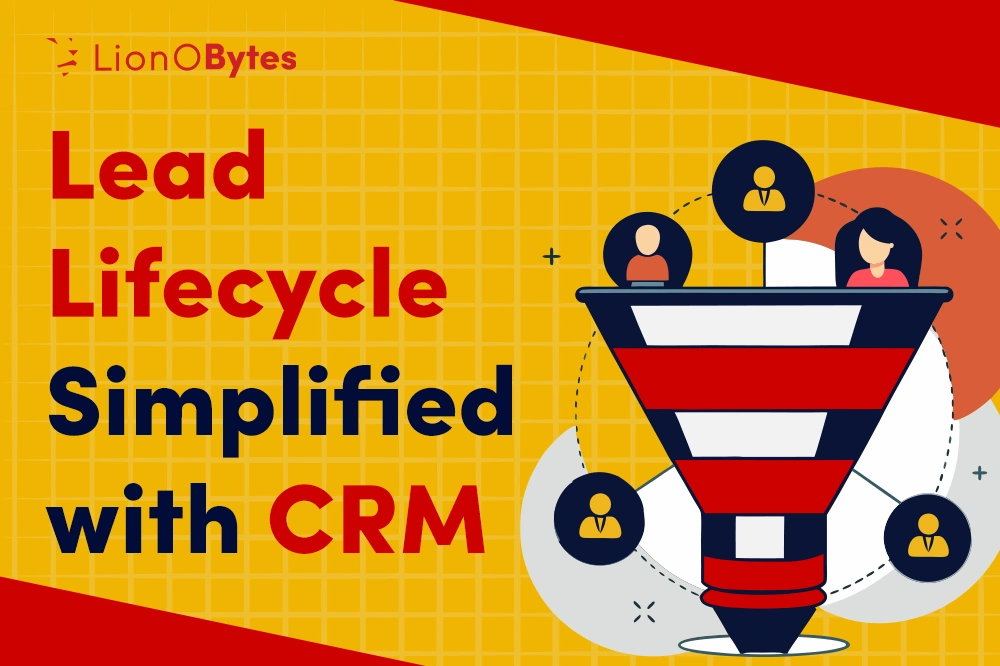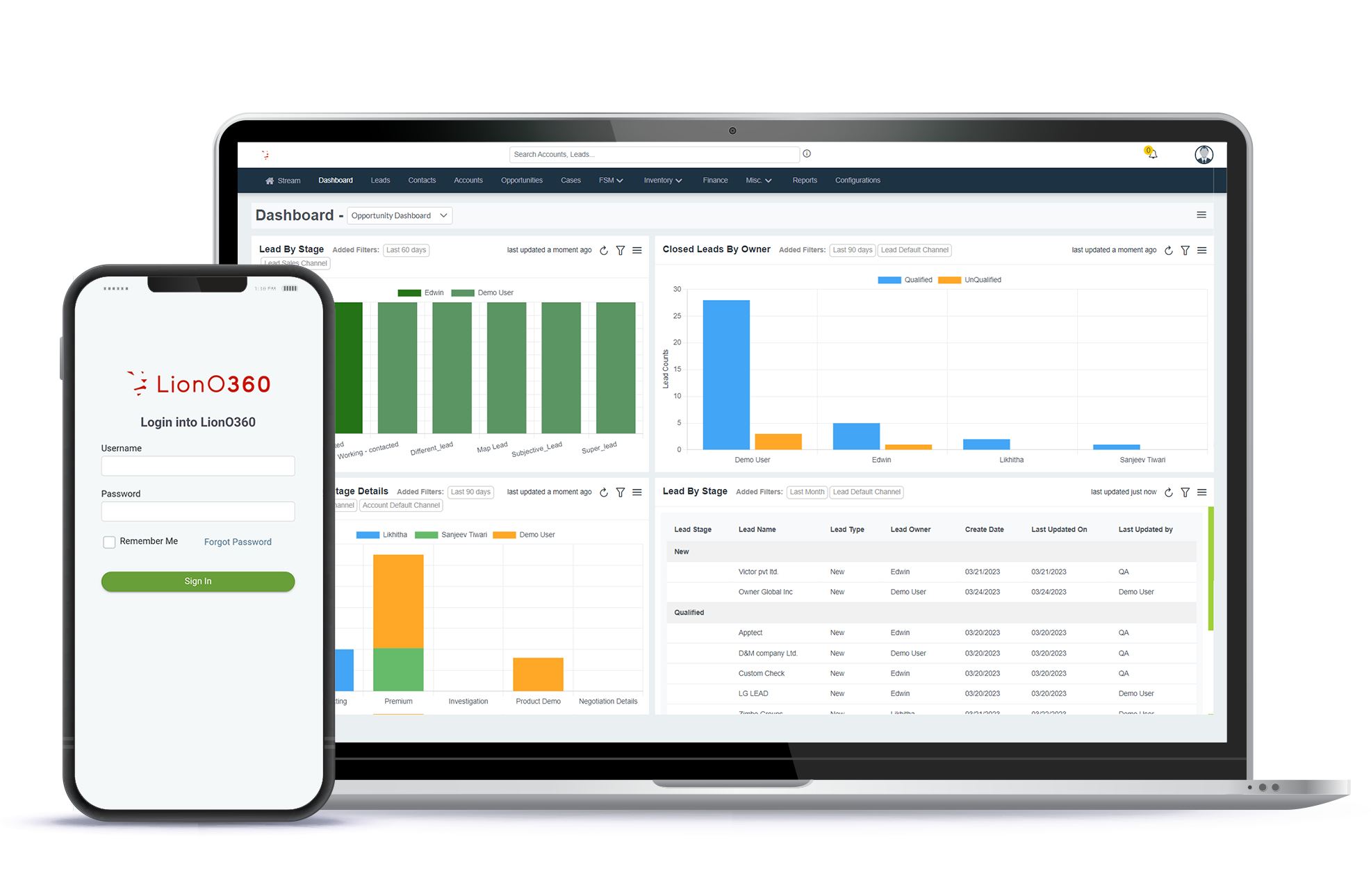
In today's business world, lead generation is just the beginning of a bigger process. Each step, from making contact to closing the sale, involves building and maintaining strong customer relationships. This can be complicated without the right tools, which is why a CRM is essential.
A sound CRM system is more than just a place to keep contact information; it is essential for managing leads. It helps sales and marketing teams track communications, provide timely follow-ups, and create a smoother process from lead to customer.
Knowing the lead lifecycle will help you better align your sales and marketing efforts. A company starts by generating leads, nurturing and qualifying them. After that they can convert them into customers and retain those customers. Each stage requires a different approach. If you don't have a centralized system to manage this process, it's easy to miss opportunities.
In this blog, we will explain the key stages of a lead lifecycle and show how CRM solutions can make each phase easier.
Lead Generation: Capturing Interest
The lead lifecycle starts with lead generation, which means attracting potential customers to your business. This can happen through different methods, like social media, email campaigns, webinars, SEO, paid ads, or referrals. At this stage, you want to collect basic information such as names, emails, companies, and interests.
A CRM system connects marketing tools to automatically gather and store lead data. It tracks where each lead comes from, helping businesses see which channels work best for generating leads. With tools like web forms, landing page builders, and lead capture automation, CRMs make sure no opportunities are missed.
Additionally, CRMs can group leads by demographics, behavior, or source. This allows for more focused follow-ups. This grouping is essential for personalizing communication, which helps move leads to the next stage of the sales process.
Lead Qualification: Identifying Sales-Ready Leads
Not all leads are created equal. Some are just browsing, while others are actively seeking solutions. Lead qualification helps determine which leads are worth pursuing based on their likelihood to convert.
CRMs use scoring models to evaluate leads based on predefined criteria such as engagement level, company size, budget, and decision-making authority. These scores help sales teams prioritize their efforts, focusing on high-potential leads while nurturing others until they’re ready.
Moreover, CRM platforms often integrate with AI tools that predict lead behavior and suggest next steps. This predictive analytics capability enhances decision-making and ensures that sales reps spend their time wisely.
Lead Conversion: Closing the Deal
Once a lead is qualified, it’s time to move into the conversion phase—turning a prospect into a customer. This stage involves personalized outreach, product demos, negotiations, and finalizing the sale.
CRMs streamline this process by providing a complete history of the lead’s journey, including previous interactions, preferences, and objections. Sales reps can use this information to tailor their pitch and address specific concerns.
Analytics and Optimization: Continuous Improvement
Throughout the lead lifecycle, data is constantly being generated. CRMs collect and analyze this data to provide actionable insights. Businesses can track conversion rates, campaign performance, customer satisfaction, and more.
These analytics help identify bottlenecks in the sales funnel, refine messaging, and optimize strategies. For example, if a large number of leads drop off during the nurturing phase, it may indicate a need for better content or more timely follow-ups.
CRM dashboards and reports make it easy to visualize trends and measure success. With this information, businesses can make informed decisions, allocate resources effectively, and continuously improve their lead management process.
Collaboration and Alignment: Bridging Sales and Marketing
One of the most overlooked benefits of a CRM is its ability to foster collaboration between sales and marketing teams. Often, these departments operate in silos, leading to miscommunication and missed opportunities.
A centralized CRM ensures that both teams have access to the same data. Marketing can see which campaigns are driving qualified leads, while sales can provide feedback on lead quality and conversion challenges. This alignment leads to more cohesive strategies and better results.
LionO360 CRM: Simplify, Automate, Succeed

The LionO360 platform gives leaders full visibility into their sales pipeline so they can forecast accurately, identify opportunities and drive performance. Plus, it is mobile-friendly, which ensures your team members can be connected and productive whenever they are out of the office. Real-time analytics and dashboards provide you with actionable insights that will help your team make quicker and better-informed decisions.
LionO360 also enhances team collaboration, automates tasks, and keeps customers engaged by offering customized communications. Whether you are leading a small business or scaling a growing business, LionO360 is right for you. We help you lead with confidence and clarity. Schedule your free CRM demo now or call us @+91 9266133544.
Frequently Asked Questions
What is the role of a CRM in today's business world?
A CRM is essential for managing leads and the entire sales process. It helps sales and marketing teams track communications, ensure timely follow-ups, and create a smoother process from initial lead contact to closing a sale.
What are the key stages of a lead lifecycle?
The lead lifecycle involves several key stages:
- Lead Generation
- Lead Nurturing
- Lead Qualification
- Lead Conversion
- Customer Retention
How does a CRM help with lead generation?
A CRM offers tools for capturing leads and can group them by demographics, behavior, or source, allowing for personalized communication to move leads further into the sales process.
Beyond lead management, what other benefits does a CRM offer?
CRMs foster collaboration and alignment between sales and marketing teams by providing a centralized system for shared data, leading to more cohesive strategies and better overall results.













